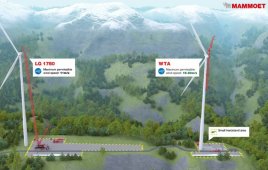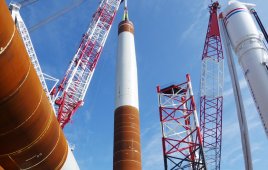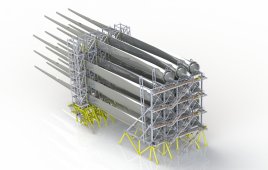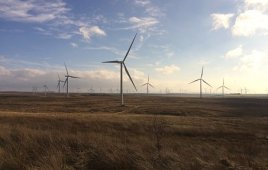Not long ago, transport company ATS International (ATSI) was contracted to ship 100 complete wind turbines. Nacelles and hubs came from Germany, towers were made in Korea, and blades were transported from a fabrication facility in Little Rock, Arkansas. The units were allocated to multiple projects in the Pacific Northwest. Due to permit and financing difficulties, developer Enxco elected to move some of the inventory from the Port of Vancouver, Washington to California, to a confirmed and permitted project, says ATSI VP Joseph Goering. ATSI was eventually contracted to move 50 complete turbines to the Shiloh III project near Rio Vista, Calif. But what would be the least expensive method? If the nacelles and towers were to be trucked to the new site, the project would need escorts for each tower section. A tower consists of three sections, and a complete turbine includes the nacelle and three blades. Each calls for separate escorts. Furthermore, nacelles and hubs cannot ship by open deck barges due to their high value and the risks of exposure to salt-water spray.
ATSI was eventually contracted to move 50 complete turbines to the Shiloh III project near Rio Vista, Calif. But what would be the least expensive method? If the nacelles and towers were to be trucked to the new site, the project would need escorts for each tower section. A tower consists of three sections, and a complete turbine includes the nacelle and three blades. Each calls for separate escorts. Furthermore, nacelles and hubs cannot ship by open deck barges due to their high value and the risks of exposure to salt-water spray.
ATSI crunched the numbers on several transport modes including truck and barge. In the end, it was contracted to move 40 towers to the project by barge and the remaining components by truck.
“The beauty of the barge option is that all the transport and stacking frames that let us double stack the towers were still in place from when they were imported from Korea. Without them, this would not have been a feasible option,” says Goering. “What’s more, the tug and barge company, Foss, had built a good deal of support brackets on the weather decking to safely secure the stacking frames that would manage the unpredictable inclement weather common to that time of year.”
“Believe it or not, transporting 40 towers by barge took only six weeks versus 16 weeks for the trucks, and the barges eliminated the bottle neck of requiring a California State Police escort,” he said. “The truck trip would have called for more capacity in escorts than the state could offer.” The final decisions provided a shorter transit time, and reduced the amount of patrol required for escorts.
WPE
Filed Under: Construction




